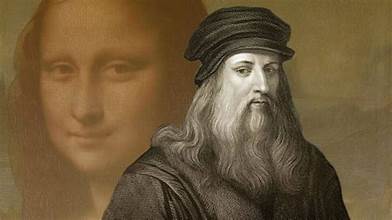We have all heard of Leonardo da Vinci, but not to the extent that this week’s sources provide. Giorgio Vasari was an artist himself. He believed that being an artist gave him an insight that others could not understand. His writing about Leonardo da Vinci suggests that he was in awe of the talent that da Vinci possessed. Leonardo had the capabilities of learning and doing many things. However, Leonardo would learn skills such as math and music, but then would quickly move on to something else. One talent he did not stop was drawing. His father recognized this talent. Leonardo’s father connected him to Andrea del Verrocchio to see if Leonardo’s drawings would amount to something for his future. Andrea was very impressed. He encouraged Leonardo to extend his drawings into sculpture and architecture. Leonardo was not one to be rushed. An example of this is with his artwork of The Last Supper. Vasari discusses the amazement at how Leonardo is able to capture the emotion of faces. An area that was a struggle with this piece was displaying the emotion of Jesus. Leonardo da Vinci was not satisfied with his work. His trait of perfectionism took over. The Prior wanted the piece completed and complained to the Duke, hoping his complaint would hurry Leonardo along. Once Leonardo heard this, he used humor to win over the Duke, explaining that he might use the Prior’s likeness as Judas. One of Leonardo da Vinci’s famous paintings is Mona Lisa. This artwork is considered so desirable due to its lifelike expressions. Vasari suggests that Leonardo kept his subjects entertained and relaxed. The smile of Mona Lisa still wows people today.

Machiavelli was present at the beginning of the Renaissance, a time of change in culture and politics. Cities in Italy, Florence, Venice, and Milan, were competing for ultimate power. These areas wanted to be superior in the new way of life, with the objective of rebirth during this period. This intense rivalry gave way to conflict and war. Those in charge needed to access all of their resources to outsmart others while protecting and serving their subjects. Machiavelli believed that the way to “found” a republic was through the leadership of one who made the decisions. The power was consolidated to establish strong groupings. He believed that violence was necessary. This was not for the personal gain of the leader but for the good of all. Once a system was in place, then the power could be distributed among the ranks to ensure stability and lasting honor to the cause. When looking at America’s “founding” of a republic in the Middle East, Machiavelli would say some areas are lacking. The ideas from Machiavelli conflict with the American attempt. Machiavelli would think the challenges were because there was not a single leader who secured the system. The American approach, a democracy, was introduced to have not one in charge but a collaborative approach to decision-making. The Machiavelli approach would argue that the US approach did not succeed because it lacked internal power that could not bring people together, which led to unstable control. A single leader could motivate and show the vision of the future to strengthen the governing structure. Some would argue the Machiavelli way was not honest, but deceitful. Machiavelli would counter that if this way of leading were used, there would be a greater opportunity for long-term success, no matter what means were used.

Leave a Reply